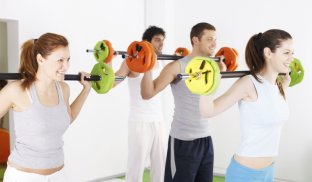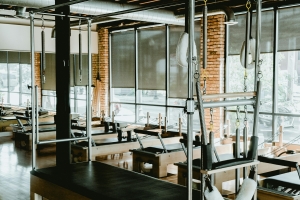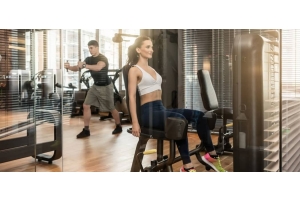A Guide to Body Pump Workouts

Body Pump originally started in New Zealand by Les Mills in 1991. It is essentially a barbell workout using light to moderate weights with lots of repetition. BodyPump workouts are either 55, 45 or 30 minute workouts. The idea is to tone and shape your body, without building bulky muscle.
What Is The Science Behind It?
The key science behind BodyPump is to perform a high number of reps whilst using light weights. The idea is to develop a lean fit body, not muscular bulk. The focus is on the shoulders, biceps, triceps, lean legs, firm glutes and a strong core. In many classes you will perform between 800-1000 reps, which Les Mills are keen to say is four times more than someone would do in a normal training session.
What Do You Need To Perform BodyPump?
If you are doing a BodyPump class at your local gym then you will be supplied with the equipment you need. But you may want to have your own equipment, or you may also want to BodyPump at home. If you do then you will need a studio pump set. This is essentially a barbell that you can attach weights to. The sets available are a 1400mm x 30mm hollowed bar which takes 17.5kg coloured discs that you can attach to either end-2x 5kg, 2x2.5kg, and 2x 1.25kg.
If you do want to lift heavier weights then you can buy a barbell that will take heavier weights, up to 35kg.
+ Buy a studio body pump barbell set
In addition to the BodyPump set you may also want to purchase an aerobic step. In BodyPump, this can be helpful in performing chest exercises, press-ups and also tricep push-ups. Another useful purchase is a mat to make the step more comfortable to lay on.
BodyPump Exercises
The exercises you perform with BodyPump are squats, chest press, dead row, clean and press, press pullover combo, lunges, reverse curl and rotator press. BodyPump targets all major muscles in the body. If you are new to BodyPump and lifting weights, then it is key that you learn the ‘set position’. Position your feet directly under your hips, feet hip distance apart. Keep knees soft and toes slightly turned out. Keep your eyes ahead and don’t bend from the waist. Bend your knees instead when you lift the bar; this will ensure your back is protected.
How Do You Know If You Are Lifting The Right Amount?
The advice is always to get the technique right before you increase any weights. There are, however, a number of pointers that may indicate that you need to increase your weights. The first pointer is quite simply if it all feels a little too easy. If you are really feeling very little resistance then look at increasing your weights. A second indicator can be that your muscles really aren’t feeling it, by this we mean that your muscles don’t feel fatigued at all.
Never worry that increasing weights will produce bulk. The whole issue with BodyPump is that the large number of reps will ensure you burn calories. You will get stronger without building bulk.
Benefits of BodyPump
The idea of BodyPump is to burn calories and improve your strength. Les Mills website claims that you can burn 560-1000 calories in each class. Interestingly, the programme was assessed by researchers at São Paulo University in Brazil. Their findings were published in the Journal of Strength and Conditioning Research earlier this year. They took a group of fairly sedentary women who took two BodyPump classes over a 12-week period. The group of 19 women were assessed before and after the study.
The findings were that whilst there were no changes in body mass and body fat there was a 33%improvement in 1RM squat strength, increased isotonic strength, lowered heart rate, lowered blood lactate concentration and improved neuromuscular efficiency. In layman’s terms what this means is that BodyPump was seen as increasing muscle strength and developing efficiency in movements and muscle activation. Researchers didn’t find any improvement in aerobic capacity but those taking part in the study said they felt their bodies had improved in metabolic and cardiovascular performance.





